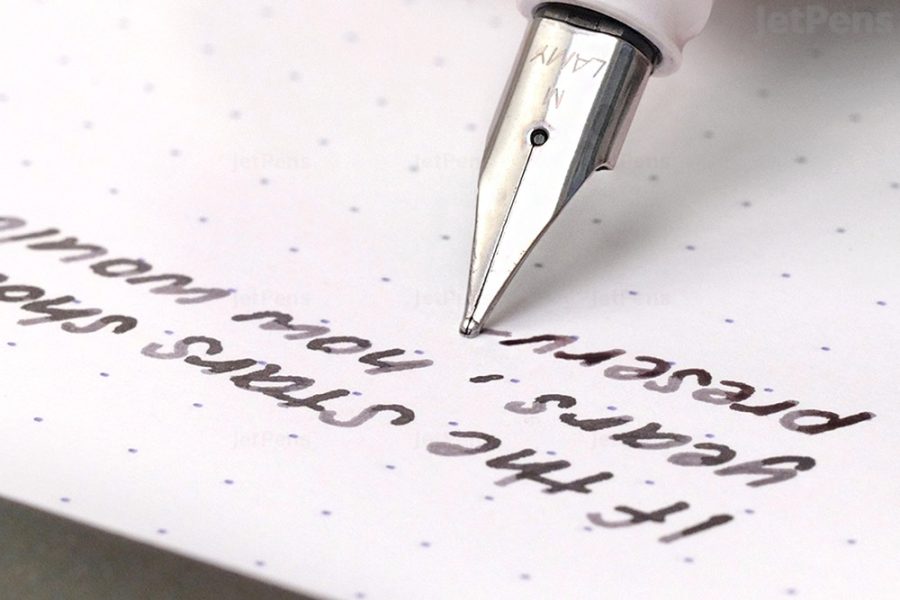An Inky Situation
March 14, 2022
As children, students were taught that the pen is mightier than the sword, but after years in the classroom, it appears that the ink is fading. With the everpresent dominance of STEM subjects over schools, the ability to truly write has already begun to slip away.
One of the most fundamental aspects of writing is legibility. Prior to the common print utilized today, schools used a variety of cursive writing forms. While cursive was an incredibly beautiful form of writing, it came at the cost of time and effort. Learning how to write in Spencerian script, for example, took years to properly learn; to become a master, lessons stretched as far as decades in length.
As a result of cursive’s time-consuming nature, American innovator Austin Palmer developed the Palmer Method of cursive. This form can be recognized today as the standard for cursive writing, and was a much simpler version of the spindly Spencerian script. Whereas Spencerian required an alarmingly large commitment by students, the Palmer Method required less than a month of learning to absorb the fundamentals. However, with the advent of the typewriter, handwriting would be shaken up once more less than a century later. In 1922, English educator Marjorie Wise introduced writing in print to the American school system. Still on the tail end of the Progressive Era, the U.S. had no shortage of schools eager to adopt a writing style that would make learning easier for students.
Despite the advantages of manuscript writing, though, there remains considerable controversy in the world of education. Namely, many educators argue that learning to write in cursive offers more benefits than elegance, and that cursive should not be allowed to fizzle out of the classroom. When learning cursive at a young age, children are exposed to a task that requires precise strokes and sustained rhythmic movements. Though more difficult to learn, cursive writing develops the motor skills involved and establishes neural foundations for a variety of other abilities. These include tying shoes, reading, word replication, and many more.
On the other hand, critics of cursive argue that the science behind cursive’s benefits is weak at best. In their minds, the recent wave of pro-cursive sentiment is nothing more than parents’ “if I did it, so should you” mentality. As Morgan Polikoff wrote in a New York Times op-ed, “The Common Core standards are well constructed and full of the essential skills students need to succeed in reading and writing…Thus, educators and policymakers should resist the urge to add more skills. Doing so would simply result in a crowded, less-focused curriculum, undermining the strength of the standards.”
In the end, every letter written on paper is one less letter typed. In the losing fight against the digitization of literature, it is time for all writers – whether traditionalists or modernists – to keep on keeping on!


